

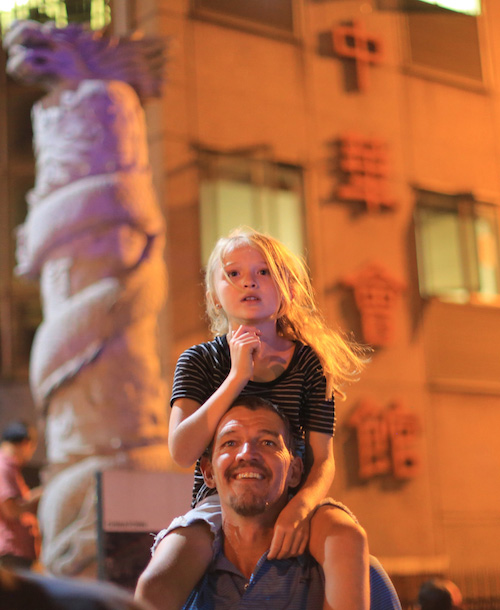 |
| A father and his daughter watch the fireworks display at the celebration of Chinese New Year in First Chinatown. (Pictures: ZHANG KAI ) |
With traditional Chinese New Year kicking off earlier this month, the city of Johannesburg has seen a series of celebrations among its Chinese community and at various venues as well as the two Chinatowns.
The most widely anticipated and most talked about by all South Africans should be the street celebrations that took place in the First Chinatown.
These included lion and drag- on dances with Chinese drumming, martial arts performances such as kung-fu and Tai Chi, pop- up stalls selling snacks and gad- gets, open-air dining with authentic Chinese food, and a massive firework displays with music. The event started at 6pm and went on until late into the night and was bustling with people of all races.
Known as the original Chinatown of the city, it is located in the city centre on Commissioner Street which runs from the M31 to the M1, keeping a low profile in the inner city of Johannesburg. Africa’s tallest building, the Carl- ton Centre, is also situated on the same street in the southern end of the Newtown district. This one-way avenue has been a significant spot since the 1800s and has witnessed the rise and fall of the city throughout its history. It has been through a period of depression and degeneration within the inner city, due to the outburst of rampant crime in the 1900s and the relocation of the famous Johannesburg Stock Exchange and, later, big business to Sandton, which also accounts for the formation of the new Chinatown in Cyrildene, Bruma in the east of Johannesburg.
The origins of the First Chinatown can be traced back to the early 1900s, when Chinese immigrants began to arrive in numbers in search of fortune and settled in and around the area. They opposed the Asiatic Law Amendment Act of 1907 and rallied behind Mahatma Gandhi’s campaign to resist compulsory registration, facing both imprisonment and deportation.
The Passive Resistance Campaign united the Chinese and Indians against a common oppression in the early 1900s.
Dating back to 1904, more than 63,000 Chinese miners were contracted to work on the Witwatersrand mines. They contributed to the revival of the economy to restore the mines as the world’s largest single producer of gold. On their days off from the compounds, they were seen on these streets riding rickshaws and bicycles and visiting eating houses and gambling dens.
It is estimated that by 1904 there were 180 Chinese businesses in the Newtown area. Yet, only some stalwarts remain after the trend of relocation. However, the First Chinatown still holds tight to its tradition of the Chinese New Year celebration year in and year out. It is a time when most of the descendants of the original immigrants — now the second and third generation South African Chinese, who are spread out over the city — gather and celebrate its legacy.
The longest-surviving Chinese restaurant in the city, Swallow’s Inn, still remains on the same street. Nearby is the super- market of classic style Sui Hing Hong, where you can buy exotic commodities from fireworks and ceramics to rare ingredients.
The New Year celebrations, with the splendid fireworks lighting up the night sky and the faces all around, people of different races, ages and backgrounds all embracing the variety of culture, reminded everyone of the city’s unique inclusiveness and diversity for all its inhabitants.
(The story was originally published on Business Day on February 29th, 2016.)
 |
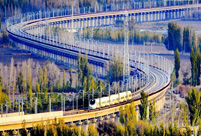 China has world's largest high-speed rail network
China has world's largest high-speed rail network Top beauties in Chinese provinces
Top beauties in Chinese provinces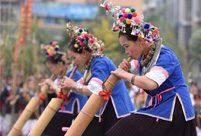 600 people attend Lusheng playing contest in S China
600 people attend Lusheng playing contest in S China Engineer troop builds bridge in real combat conditions
Engineer troop builds bridge in real combat conditions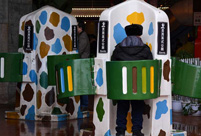 You can urinate in public in Chongqing
You can urinate in public in Chongqing Rice terrace scenery in southwest China's Yunnan
Rice terrace scenery in southwest China's Yunnan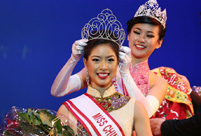 2016 Miss Chinatown USA pageant held in San Francisco
2016 Miss Chinatown USA pageant held in San Francisco Ancient pagodas across China
Ancient pagodas across China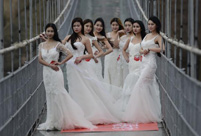 Wedding dress show up in the air
Wedding dress show up in the air Top 20 hottest women in the world in 2014
Top 20 hottest women in the world in 2014 Top 10 hardest languages to learn
Top 10 hardest languages to learn 10 Chinese female stars with most beautiful faces
10 Chinese female stars with most beautiful faces China’s Top 10 Unique Bridges, Highways and Roads
China’s Top 10 Unique Bridges, Highways and Roads Harris is making waves in S.China Sea
Harris is making waves in S.China Sea With new plant, Airbus seeks to secure China market share
With new plant, Airbus seeks to secure China market share Chinese sound off on America’s loudest presidential hopeful
Chinese sound off on America’s loudest presidential hopeful 40 years after Cultural Revolution, repentance of Red Guards is still rare
40 years after Cultural Revolution, repentance of Red Guards is still rareDay|Week